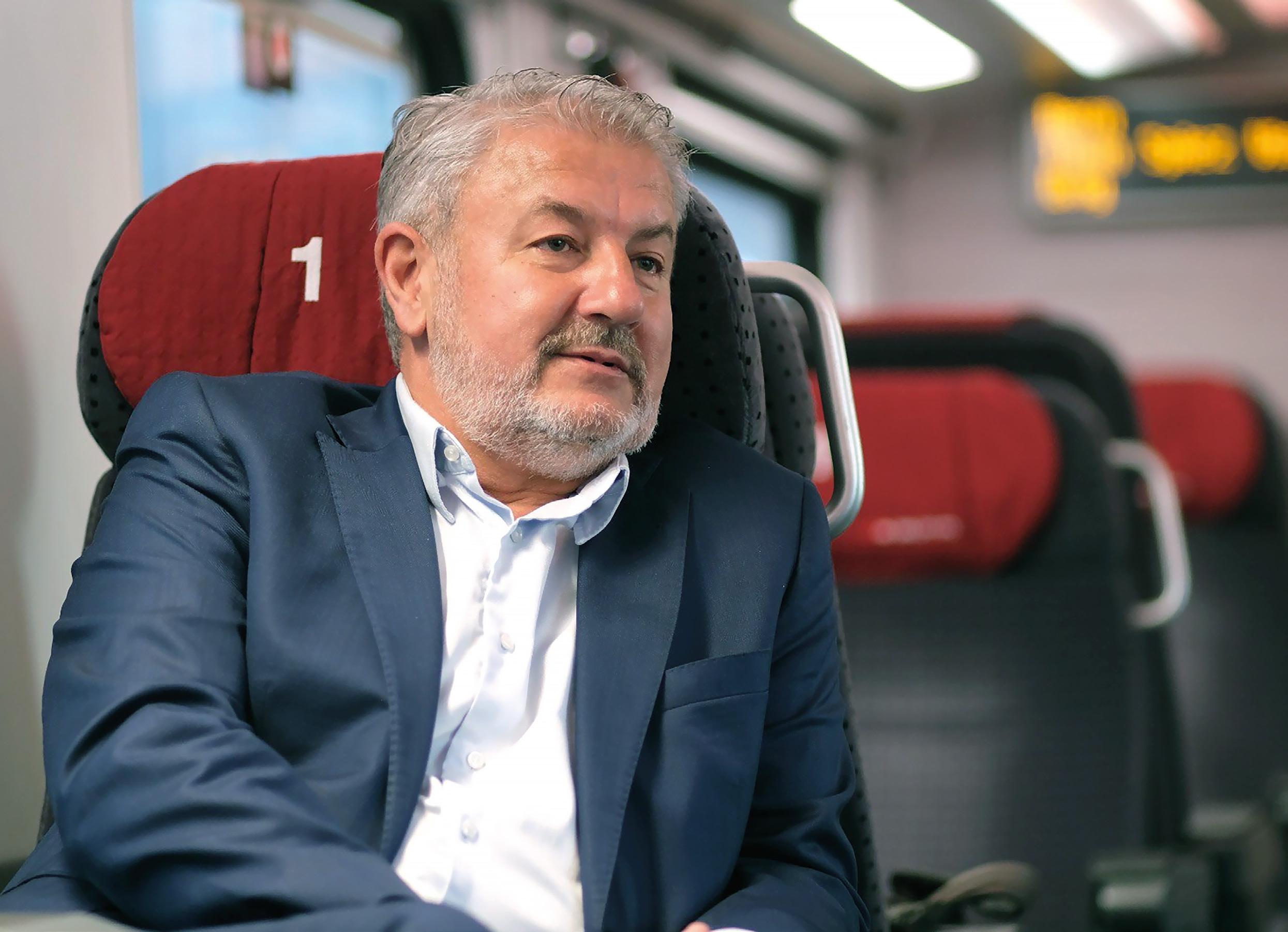
15 minute read
TRAINS CONNECT PEOPLE AND INTERESTS
INVESTMENTS
ŽELJKO DAVIDOVIĆ,
Advertisement
Sales Director for Central and Eastern Europe, Stadler
Stadler electric trains have been running on Serbian railways for years, but since the high-speed train "Soko" became a favorite means of transport on the Belgrade-Novi Sad route, Stadler became one of the most well-known Swiss brands in Serbia. We asked Željko Davidović, Stadler's sales director for Central and Eastern Europe, in an interview for our magazine, what new products and services Stadler plans to market in Serbia and why this cooperation is more than just business
Text:
GORDANA KNEŽEVIĆ MONAŠEVIĆ
Photo:
STADLER
T
he high-speed train that runs between Belgrade and Novi Sad was named “Soko”, but perhaps it could have been called “Željko.” Partly because we were all eager (“željni” in Serbian) to finally board a train traveling at 200 km/h, and partly because one Željko is at the heart of the successful cooperation between Stadler and Serbia. For him, this success story is much more than a business deal that he regularly makes with other countries in the region. Željko Davidović is Stadler’s sales director for Central and Eastern Europe, but whenever he has the opportunity, he likes to mention that he is from Mrkonjić Grad. It is a small town in Bosnia and Herzegovina, famous for many reputable people and most of all for King Peter I of Serbia, who, under the pseudonym Petar Mrkonjić, stayed there during the uprising against the Turks. However, as important as his birthplace is to him, as well as Belgrade, where he studied and where he likes to come with his wife whenever he gets the chance, Switzerland is also important to him since it has been his home for 32 years.
After graduating from the Belgrade University in 1991, he came to Wengen, a fashionable Swiss ski resort that was frequented by his then-sports idol, Bojan Križaj. He came to ski and rest, but stayed there as a ski instructor. Željko would say that his skiing vacation is still ongoing, but becoming Stadler’s sales director required a long professional journey and many life lessons from being a ski instructor. After realizing that he could not find a serious job without a Swiss degree, he completed post-graduate studies in economics at St. Gallen, learned German, worked as a waiter to support the family he had started in the meantime, and finally got a professional job in a telecommunications company. He advanced in many sectors of the company, learned all the harsh lessons of capitalism, and realized that he wanted to do something that united people rather than divided them. Once he entered the sales industry, trains and Stadler, where he has been employed for seven years, entered his life.
“Trains are amazing. Trains bring people together and bring interests together. That’s how I like to work. I’m not just a seller who closes a deal for a certain amount of money and goes on. Combining people’s interests and figuring out how I can help gives me pleasure. The cooperation between Serbia and Stadler could have ended with the delivery of new trains, but it didn’t because we made many small steps toward connecting each other in the meantime, so it is now an important long-term cooperation,” says Željko Davidović.
Stadler electric trains have been a trademark of Serbian railways for many years. Meanwhile, we’ve grown accustomed to the comfort of high-speed trains running on the Belgrade-Novi Sad route, and new trains have been ordered. How many Stadler multiple units in total will run on Serbian railways?
— Back in 2013/2014, we signed a contract with Serbia for 21 single-deck electric trains, which were delivered and are already in operation. Last year we delivered three double-decker electric trains, so-called high-speed trains, and, as far as I can see, they became very popular. It raised the popularity of other electric trains as well, which is very good because the advantages of traveling by train are great: passengers don’t get tired, they don’t use cars, it’s safer, there are no accidents, it’s more comfortable, it’s cleaner, and there’s no pollution or traffic jams. My colleagues often call me while they are taking the high-speed train to Novi Sad. They are delighted with how quickly they arrive, and that is all very positive. I also think that the President of Serbia, Mr. Vučić, contributed a lot to the popularity of those trains because he rode in them several times and even gave interviews while traveling in
them. Last year, Serbia ordered another 18 single-decker electric trains from Stadler, and their delivery will begin at the end of next year. That will be a total of 42 Stadler electric multiple units on Serbian railways.
Three high-speed trains that Serbia bought were the first high-speed trains delivered in Eastern Europe. Have your high-speed trains started running on some other railways in this part of Europe, apart from Serbia, in the meantime?
— No. Serbia is still ahead because no country in that part of Europe has built tracks for high-speed trains yet. In Eastern Europe, only Serbia has a railway for highspeed trains. Double-decker trains operate in Hungary, but their maximum speed is 160 kilometers per hour because they do not yet have a suitable track. It is true that the section of high-speed rail in Serbia is short, only running from Belgrade to Novi Sad, but the goal is to expand it towards Subotica, then connect with Budapest, and later, towards Niš, i.e., the south of Serbia.
During the recent visit of the Serbian delegation
Stadler delegation in Serbia with President Aleksandar Vučić

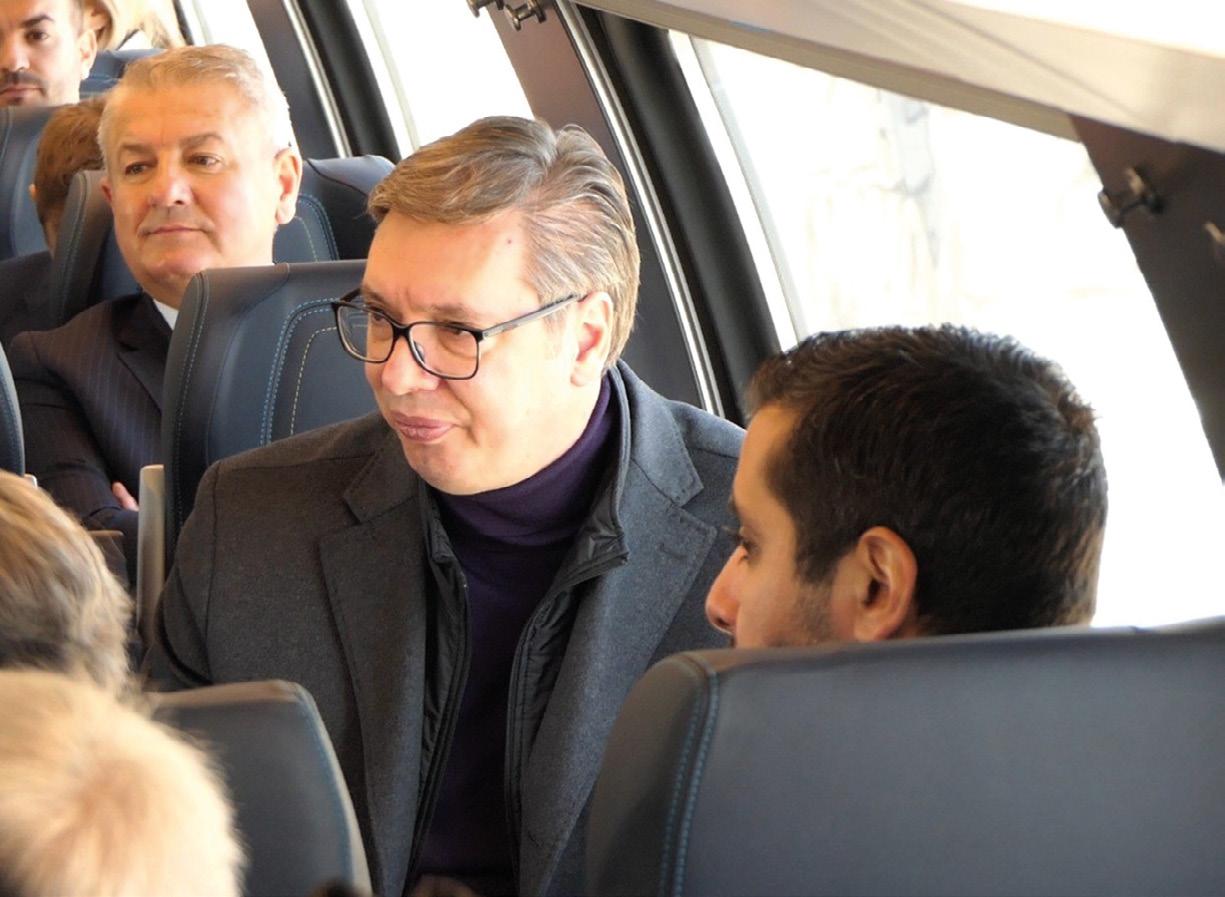
to Switzerland, headed by the former Minister of Construction, Transport and Infrastructure, Tomislav Momirović, it was announced that Serbia will buy hybrid trains from Switzerland for sections that have not yet been electrified. Will these be Stadler trains too?
— The delegation visited the state-owned Swiss Federal Railways (SBB) and heard their experiences and advice. They concluded that it is best for Serbia to buy trains that can be used both now and later. Hybrid trains, to which Mr. Tomislav Momirović was referring, are, in fact, diesel trains that can be switched to electric drive if necessary. Now they can be used on sections that are not electrified, and when the conditions are right, they could be upgraded to function as electric trains. Stadler also has such trains in its offer, Italy and Slovenia, for example, are buying them from us. These trains operate in many European cities, such as Zurich and Berlin, and usually connect the suburbs with the city center. I don’t know if Serbia will buy them from us. First of all, a tender for public procurement should be announced.
Until now, Stadler has always won tenders in Serbia. Were your offers really that much better?
— Yes. We always won tenders, and I’m really happy about that because, as someone who comes from this region, I personally tried to make offers more favorable, prices lower, and delivery times faster. However, it’s not just the numbers that decide. Emotions play an important role as well. If they disappear, then this will be another planet. So we can say that, actually, in the background of this whole business cooperation, there was some Željko from Mrkonjić Grad, who made a little extra effort on both sides, and all because I have a great desire that tomorrow, when my grandchildren take a train ride around Serbia, or by tram in Belgrade, they can say: “These are our grandfather’s trains and trams!” So, it’s not just business for me because I sell these trains and trams to other countries in Central and Eastern Europe as well.
Emotions are also important. That is why the meetings between the Stadler delegation and representatives of the Serbian government were always more than just business meetings. You know, the owner of Stadler, Peter Spuhler, is a billionaire, but he was very impressed when he travelled by train together with the President of Serbia and when Aleksandar Vučić gave him superb hospitality at Salon 1905, in the Geozavod building, in the presence of the highest state delegation. Such a reception and socializing really had an impact on Peter Spuhler, who became fond of our people. Following that, Mr. Spuhler extended the highest level of hospitality to our delegation in Switzerland, in the presence of our diplomatic representatives, Consul Mihailo Šaulić and Ambassador Goran Bradić. And that’s how the cooperation between Serbia and Stadler started. That’s exactly how it should work at the state level.

Peter Spuhler, owner of Stadler, and Željko Davidović, during their visit to Belgrade
The high-speed trains that Serbia bought from Stadler are still the only high-speed trains operating in Eastern Europe
At the beginning of this year, Peter Spuhler and the Stadler delegation visited the MIND Park in Kragujevac. It was announced that the production of components for rail vehicles and possibly complete trains for Stadler could be started within the MIND Park. How far have these negotiations come?
— What Mr. Bratislav Milanović has done with the MIND Park in Kragujevac is world-class and deserves great respect. On the other hand, Stadler is progressively expanding every year. Given the already favorable conditions, it was a reasonable decision to move a portion of the production to Kragujevac while relaxing the production in Poland, where we have already exceeded all production capacity limits. We negotiated the production of components for rail vehicles in the MIND park, but it all took place seven days before the war in Ukraine began. When the war started, incredible and uncontrolled reactions from the countries followed, and our owner decided to halt all further expansion until the situation was a little clearer. He then recognized that this collision, which happened in Ukraine, was not just a one-day event and that it would create a new global trend. Regardless of all the circumstances, we are going to MIND Park again, among other things, because of the possibility of producing some components for trams there. And Belgrade needs new trams.
What kind of trams are best for Belgrade?
— We would like Stadler trams to become a symbol of Belgrade. Those are trams of exceptional quality— trams that do not rattle when the lines are bent and do not produce vibrations in the nearby buildings. When it comes to tram lines, every city in the world is dealing with the same problems. There are certain line deviations as a result of the weather, which includes heavy frosts and colds in the winter and strong heat and sun in the summer. After that, they require maintenance every two to three years. Wealthy cities in Western Europe, such as Helsinki, Zürich, and Stockholm, can afford that. Eastern European cities, due to a lack of funds, perform such infrastructure servicing at longer time intervals, usually seven to eight years. As a result, there are increased track deviations and additional vibrations and rattles. In such conditions, damage of tram lines as well as the tram wheels is significantly increased, which raises costs

Stadler also has a large selection of metro vehicles in its portfolio, all of superior design and quality
for both the city and the operator. Stadler developed a special tram base that adapts to the unevenness of the tracks in the lower part of the train and stabilizes it in the upper part to avoid or minimize such effects as much as possible. Thus, on the one hand, there is no additional damage to the tram lines and wheels, and on the other hand, passengers do not feel the rattling and vibrations. It’s a pretty remarkable solution. Although we developed such a stand mainly to satisfy the needs of the Eastern European market, it is interesting that the city of Milan immediately bought those trams, as did the city of Sarajevo. Belgrade has one of the most demanding topographies for tram traffic in Europe, and I’m sure that this technical solution would be perfect for it.
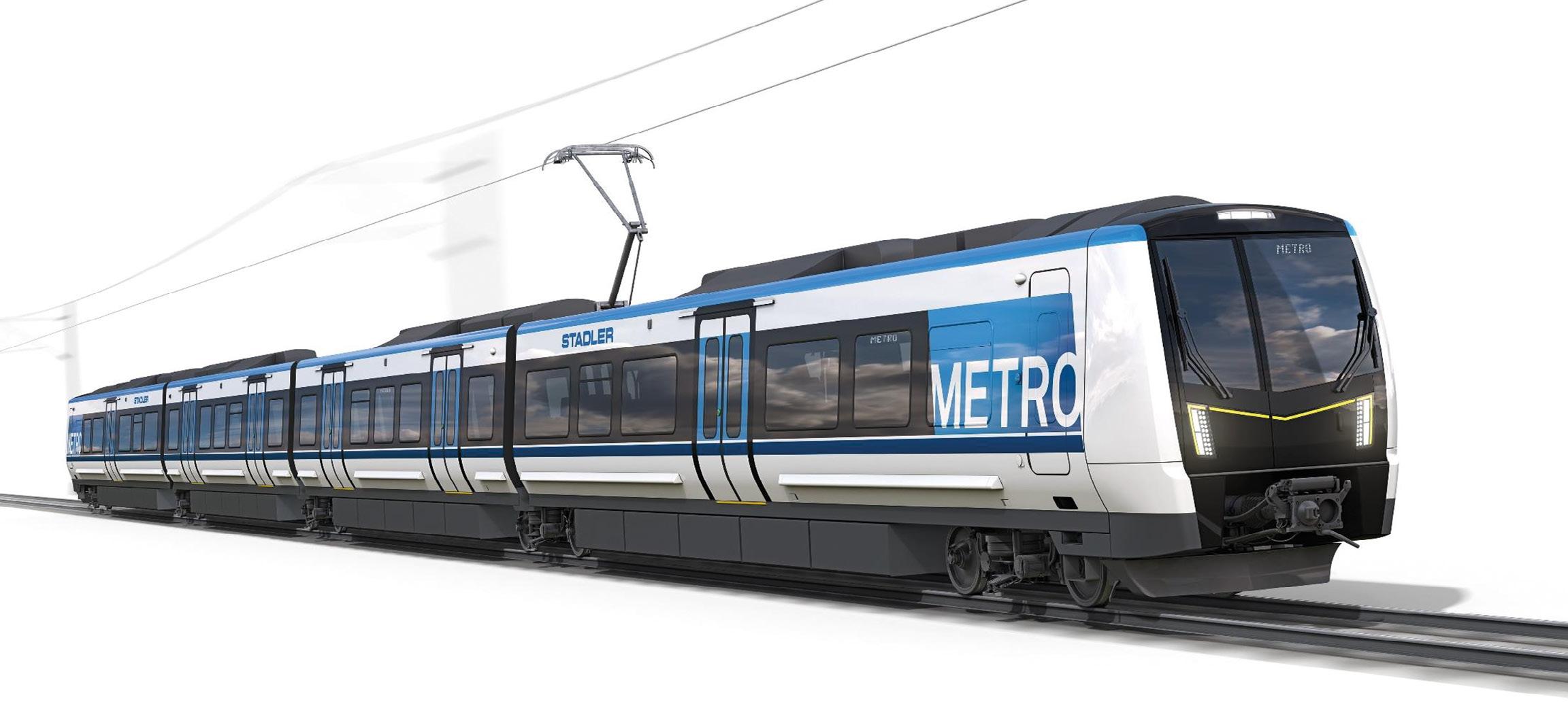
Was there any mention of the potential future purchase of trains from Stadler for the Belgrade Metro?
— When it comes to the metro, I think it falls within the scope of the interstate agreement between Serbia and France, which provided Serbia with a loan of around 500 million euros. If the opportunity arises, Stadler would be very happy to offer its products for the Belgrade Metro as well, which are truly superb in terms of design and quality. Modeled after the French loan, we came up with the idea that Stadler could be the initiator of a loan that would be secured by the Swiss state export insurance, under very favorable conditions. The loan would include around 800 million euros for trains and 400 million euros for trams, along with funds to build service stations for the maintenance of rail vehicles. However, it turned out that Switzerland, as a confederation, does not have the constitutional authority to make interstate agreements, so we are currently looking into the options for how this loan might be realized.
A recent working visit of our delegation to Switzerland and discussions about the reorganization of Serbia’s railway transport show that Switzerland is clearly a model and will provide support in the further improvement of railway transport. In what other ways, apart from the delivery of new trains, could Stadler contribute to the mo-
SWISS TRAMS OPERATE LIKE A SWISS WATCH
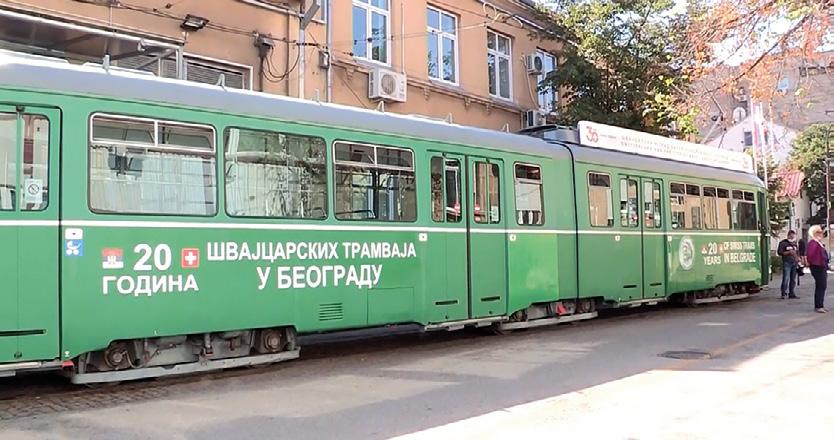
“Last year, in September, we helped the Swiss Embassy in Belgrade organize a small jubilee celebration—we marked 20 years since Switzerland donated 115 trams to Belgrade. I refer to those green and yellow trams, which may look old-fashioned but still work impeccably. That was after the NATO bombing of the Federal Republic of Yugoslavia, at a time when nobody in the world wanted to cooperate with Serbia, and Switzerland was the only country that, without any conditions, gave a significant gift to Belgrade. These were all serviced trams, and they came with many spare parts. GSP drivers say that they are still safer to drive than the new, red ones. They claim they operate like a Swiss watch,” says Željko Davidović.
A proposal for a new Stadler tram for Belgrade
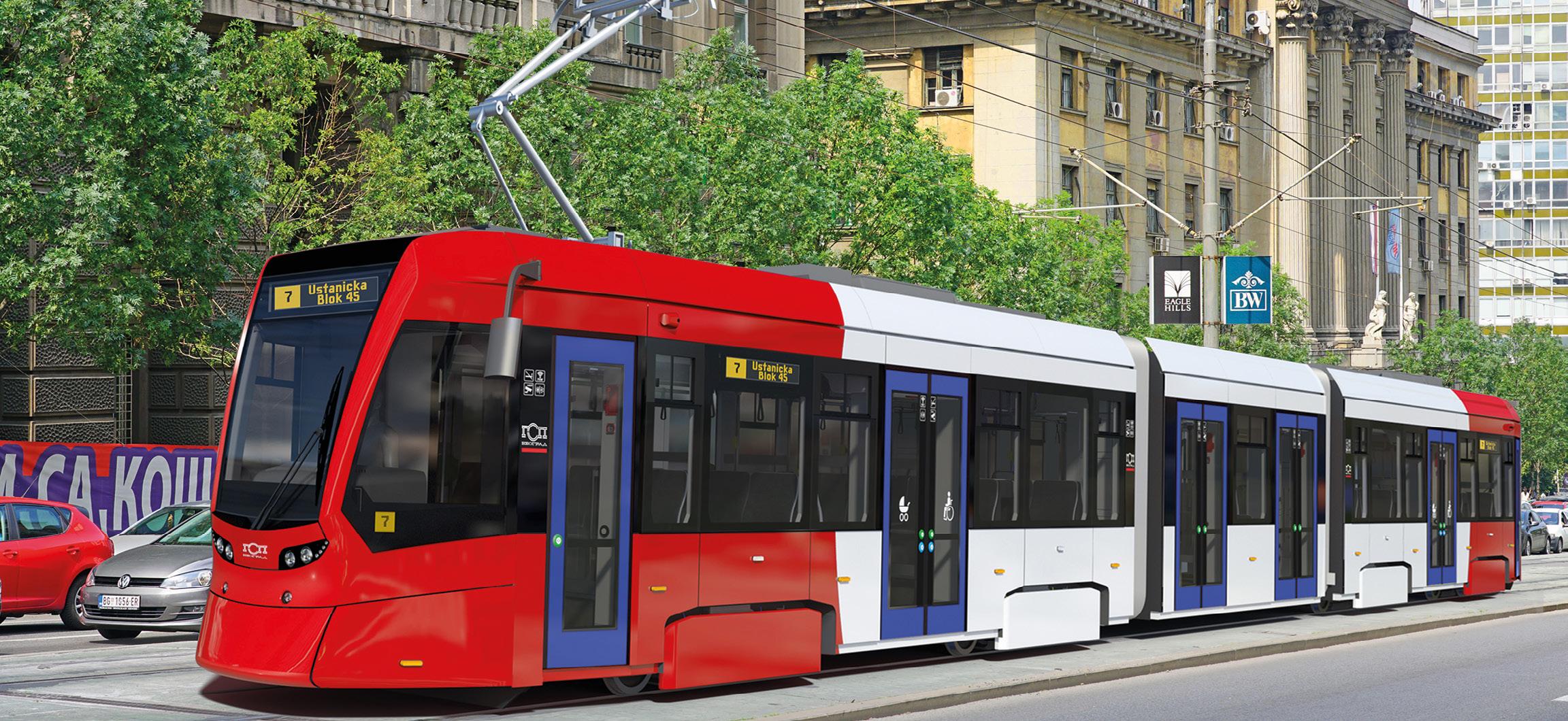
dernization of Serbian railways?
— The people who work at GSP and Srbija Voz are exceptional world-class experts, and this is always noticeable in meetings like these, such as the last visit of the Serbian delegation to Switzerland. It was precisely the lack of funding that forced our people to overcome all technical problems and make experts out of them, which never ceases to amaze our colleagues from the West. However, the complete functioning of railroad traffic now needs to be raised to a much higher level. Since Stadler is a train supplier for Serbia and a company that is in daily contact with colleagues from Serbia, we work together on education as well as the daily training of the staff who work on servicing our trains. In addition to the excellent cooperation related to rail vehicles, we also have interesting examples of cooperation on other levels. I would like to mention the visit of Dr. Ansgar Brockmeyer, executive vice president of sales and marketing at Stadler, deputy CEO, and member of the executive board of our company, to the Faculty of Transport and Traffic Engineering in Belgrade in March of this year. Mr. Brockmeyer gave a guest lecture on the difficulties in developing high-speed trains and aroused great interest. This encouraged the Faculty of Mechanical Engineering in Belgrade to send us proposals for cooperation that would include, among other things, student exchange and student internships at Stadler. We are currently developing a plan for such cooperation, and we would be extremely pleased to host and provide an opportunity for students from Serbia to gain their first experiences in development projects in some of the Stadler’s research centers.
Stadler is one of the leading producers of rail vehicles, with more than 14,000 employees in more than ten countries around the world. This year, you celebrated the 80th anniversary of your establishment. What is the key to such long-term and widespread success, and what type of product is currently in the most demand?
— Let me tell you, the key to success is not one single thing. Our owner took over this company in 1989, when it had only 18 employees. He got a bank loan of five million francs and set out to motivate people to come and work for him with the promise of making a global brand. As it worked then, it still works today. He is a teambuilder. For him, it’s more of a passion than a business. And so is all of us who work at Stadler. We work for a salary, of course, but we are also driven by passion, and we are incredibly connected as a team. Our slogan is “There’s nothing that can’t be done.” We don’t merely follow corporate rules; Peter, the owner, quickly makes decisions about whether something can or cannot be done, and then we all push in that direction. He is very good at motivating people and is very fair; he always shares his success and profits with all his employees. People like him very much, not only in our company but throughout Switzerland. He is a very positive person.
As far as trends are concerned, green technology is currently trending in Europe, so now we are mostly developing battery-powered and hydrogen-powered trains. We have been working on this project for four or five years. We did a lot of tests, which are incredibly expensive, by the way. In addition to hydrogen and battery-powered trains, we are also developing hybrid trains, which are in high demand on the market. We also offer trams of exceptional quality with minimal exploitation costs. Our development team works every day on improving the products, so our portfolio, in terms of quality, is top-notch.










